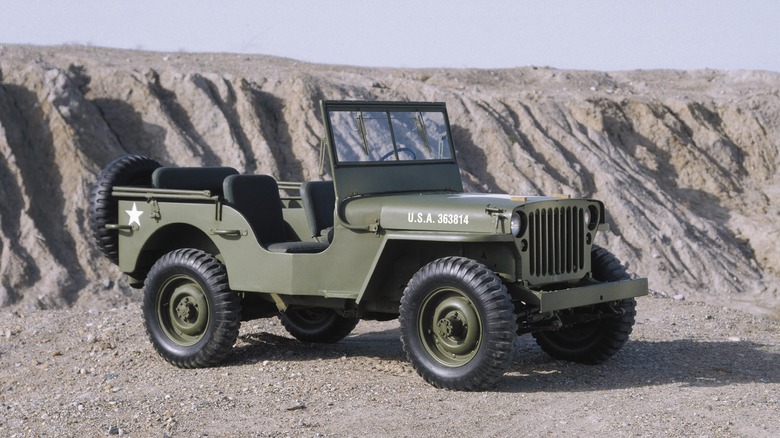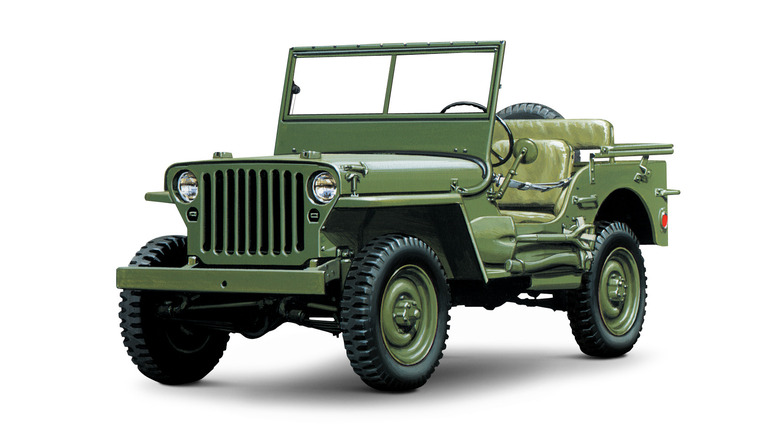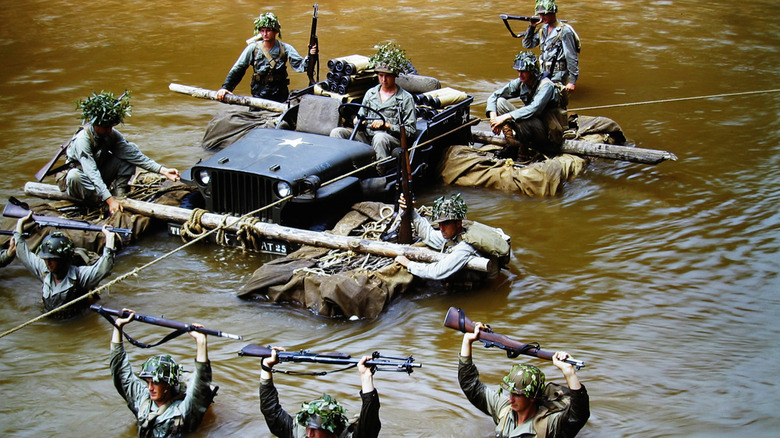Here's What Made The Willys MB Jeep The Ultimate Off-Road Machine
In 2023, there are plenty of fantastic off-roaders on the market. Toyota has the 4Runner, Land Cruiser, and Tacoma. Ford makes the wickedly fast Raptor. And Chevrolet offers the Trail Boss variant of the Silverado pickup. But the grandfather of them all is Jeep and its classic boxy 4x4, the Wrangler. Technology has made the Wrangler better over the decades, but aesthetically, the design hasn't changed very much. From its inception in the late 1980s, there are several mainstays with the Wrangler: you can take the doors off, it's shaped like a cube, and it can go just about anywhere wheeled transportation will allow.
Before the Wrangler, there was the CJ series of Jeeps that were made in the 1940s through the 1980s. That series was made by a wide array of manufacturers as Jeep was bought and sold many times over the course of the its history. But the most best-known of these manufacturers were Willys-Overland, Kaiser, and American Motors (via SiloDrome). Years before the CJ became a symbol of off-road freedom, the Willys MB became the symbol for freedom across the globe.
A soldier's friend
According to Jeep, the United States Army first ordered the Willys MB in 1941 to give U.S. soldiers fighting the Axis Forces a reliable workhorse. It was made without much modification until the end of the war in 1945. During the war, it gained a reputation as being capable of doing just about anything. It served as a weapons platform for Browning .30 caliber and .50 caliber machine guns. it hauled the wounded out of harm's way, it carried rations to the front lines. It was indefatigable. It also had the advantage of four-wheel drive, allowing it to traverse war-torn terrain with relative ease. The German-equivalent Volkswagen manufactured Kubelwagen was only rear-wheel drive (Via The Internet Archive).
A reporter at the time, Ernie Pyle, said of the Willys MB: "It did everything. It went everywhere. Was a faithful as a dog, as strong as a mule, and as agile as a goat. It constantly carried twice what it was designed for and still kept going." Enzo Ferrari himself was a noted fan of the humble jeep and called it "the only true American sports car."
A tenacious and tiny off-roader
Mechanically was where the Jeep really made its name known. It was powered by a 134 cubic inch four-cylinder (also called the "Go-Devil") that put out a whopping 60 horsepower and 105 pound feet of torque. But it was aided by its relatively light weight and tall and narrow 16-inch wheels. The 4x4 components, including a two-speed transfer case, were supplied by Dana, a company that still supplies automakers to this day (via Kaiser-Willys). The layout was extremely simple and easy to work with. It didn't have a roof to worry about, there were no doors present, and the windshield is basically optional. It's exactly a vehicle and nothing else.
Although the specs aren't impressive compared to off-roaders of today, the market itself wouldn't exist without the Willys MB, much less Jeep as a brand. When a vehicle's accomplishments include both praise from the founder of Ferrari and assisting in the collapse of the Axis Forces, it's safe to say it has more off-road credentials than your average lifted Tacoma.


